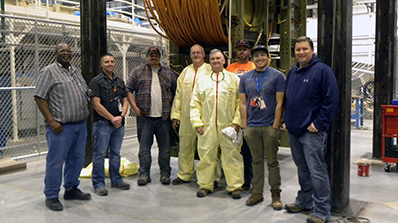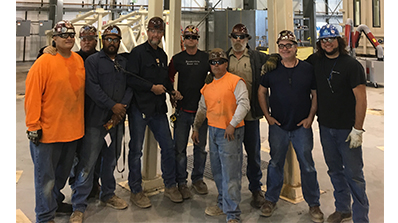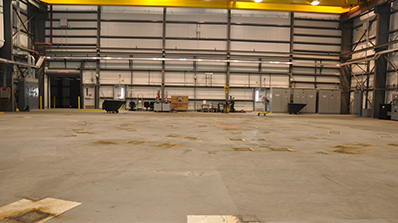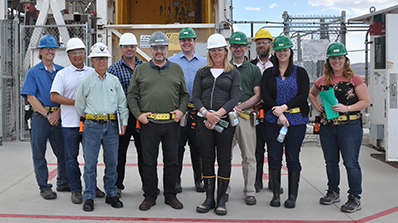National Nuclear Security Administration (NNSA) headquarters’ personnel, led by Robin Noyes of the Defense Programs Office of Recapitalization, recently visited Nevada National Security Site (NNSS) facilities in Southern Nevada, as part of the Capabilities Based Investments (CBI) Program Review for the NNSS. The CBI Program has helped the Site in numerous ways, and the NNSS wanted to show how the mission is benefitting from their investments.
“The CBI Program funds projects across the NNSS and its outlying locations. This is important because the CBI Program recapitalizes mission capabilities supporting national objectives set forth by the NNSA for present and future investments, and is critical to the success of our mission for national security,” says Dimitry Molodyko, Mission Facilities manager of Enterprise Infrastructure Programs (EIP). The EIP, a division within the NNSS’ Program Integration directorate, works with the Nevada Enterprise to modernize and enhance the NNSS infrastructure to meet future national security challenges.
The first day of the NNSS tour included the U1a Complex, Building 6-922 (former home to the Atlas Machine) in Area 6, the Dense Plasma Focus (DPF) Facility in Area 11, and the Device Assembly Facility. NNSS subject-matter experts were able to demonstrate progress across a range of projects that NNSA has funded, including the Atlas Transition Project in Building 6-922. The group gained further details of the Atlas machine’s removal to make room for the next mission, Scorpius, an ECSE (Enhanced Capabilities for Subcritical Experiments) project whose components will be fabricated at Los Alamos National Laboratory (LANL). The components for Scorpius will be transported to Building 6-922 in 2021, where they will be inspected, tested and configured for assembly underground at the U1a Complex. Right now, the NNSS is working with LANL, Sandia National Laboratories and Lawrence Livermore National Laboratory on Scorpius’ engineering design.

“The purpose of the Scorpius ECSE machine is to take pictures of a subcritical experiment as it is imploding. Scorpius is designed to be different from existing machines at U1a, in that it would be more powerful, creating X-rays for a camera sitting off to the side to record the implosion. These pictures will help validate stockpile, reliability and computer modeling codes without performing underground nuclear tests,” says James Gatling, distinguished engineer for NNSA Programs.
On the second day, the Program Review included briefings and additional tours of the Standards & Calibration Laboratory and the A-1 Machine Shop at the North Las Vegas Facility, where recent NNSA investments have significantly increased mission capability.
NNSA is also supporting the NNSS mining capabilities for the U1a Complex Enhancements Project and is expected to fund a follow-on Building 6-922 reconfiguration support project.
*****
The Atlas Transition disassembly project was complex, but that is nothing new to the Site’s employees (some of whom are pictured below) who are responsible for such work. Their experience and ability to adapt the project execution plan as the disassembly progressed allowed them to complete the project well ahead of schedule and under budget.





